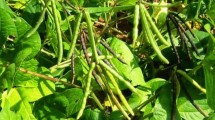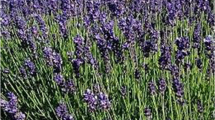Abstract
The anti-inflammatory activities of kakkalide, a major constituent of the flower of Pueraria thunbergiana, and irisolidone, a metabolite of kakkalide produced by intestinal microflora, against carrageenan-induced inflammation in air pouches on the backs of mice and in lipopolysaccharide (LPS)-stimulated peritoneal macrophages were investigated. Kakkalide and irisolidone down-regulated the gene expression of cytokines [tumor necrosis factor alpha (TNF-α) and interleukin-1 beta (IL-1β)] and cyclooxygenase-2 (COX-2) and the production of pro-inflammatory cytokines, TNF-α and IL-1β, and inflammatory mediators, NO and prostaglandin E2 (PGE2), in LPS-stimulated peritoneal macrophages. These agents also inhibited the phosphorylation of IκB-α and the nuclear translocation of nuclear factor-kappa B (NF-κB). Orally administered kakkalide and irisolidone significantly reduced carrageenan-induced inflammatory markers, leukocyte number, and protein amount in the exudates of the air pouch. These constituents also inhibited PGE2 production and COX-2 inducible nitric oxide synthase, IL-1β, and TNF-α expression. These agents also inhibited NF-κB activation. The anti-inflammatory effects of irisolidone were more potent than those of kakkalide. Based on these findings, kakkalide and irisolidone may inhibit inflammatory reactions via NF-κB pathway, and irisolidone, a metabolite of kakkalide, may more potently inhibit these inflammatory reactions.







Similar content being viewed by others
References
Ross, J.A., M.J. Auger, B. In Burke, and C.L. Lewis. 2002. The biology of the macrophage, 1–72. Oxford: Oxford Medical Publications.
Hewett, J.A., and R.A. Roth. 1993. Hepatic and extrahepatic pathobiology of bacterial lipopolysaccharides. Pharmacological Reviews 45: 382–411.
Kubes, P., and D.M. McCafferty. 2000. Nitric oxide and intestinal inflammation. The American Journal of Medicine 109: 150–158.
Watson, W.H., Y. Zhao, and R.K. Chawla. 1999. S-adenosylmethionine attenuates the lipopolysaccharide-induced expression of the gene for tumour necrosis factor alpha. The Biochemical Journal 342: 21–25.
Won, J.H., H.T. Im, Y.H. Kim, K.J. Yun, H.J. Park, J.W. Choi, and K.T. Lee. 2006. Anti-inflammatory effect of buddlejasaponin IV through the inhibition of iNOS and COX-2 expression in RAW 264.7 macrophages via the NF-kappaB inactivation. British Journal of Pharmacology 148: 216–225.
Kopp, E.B., and S. Ghosh. 1995. NF-kappa B and rel proteins in innate immunity. Advances in Immunology 58: 1–27.
Barens, P.J., and M. Karin. 1997. Nuclear factor-kappaB: a pivotal transcription factor in chronic inflammatory diseases. The New England Journal of Medicine 336: 1066–1071.
Keung, W.M., and B.L. Vallee. 1998. Kudzu root: an ancient Chinese source of modern antidipsotropic agents. Phytochemistry 47: 499–506.
Woo, J., E. Lau, S.C. Ho, F. Cheng, C. Chan, A.S. Chan, C.J. Haines, T.Y. Chan, M. Li, and A. Sham. 2003. Comparison of Pueraria lobata with hormone replacement therapy in treating the adverse health consequences of menopause. Menopause 10: 352–361.
Han, Y.O., M.J. Han, S.H. Park, and D.H. Kim. 2003. Protective effects of kakkalide from Flos puerariae on ethanol-induced lethality and hepatic injury are dependent on its biotransformation by human intestinal microflora. Journal of Pharmacological Sciences 93: 331–336.
Hooshmand, S., Y. Soung do, E.A. Lucas, S.V. Madihally, C.W. Levenson, and B.H. Arjmandi. 2007. Genistein reduces the production of proinflammatory molecules in human chondrocytes. The Journal of Nutritional Biochemistry 18: 609–614.
Kim, Y.P., M. Yamada, S.S. Lim, S.H. Lee, N. Ryu, K.H. Shin, and K. Ohuchi. 1999. Inhibition by tectorigenin and tectoridin of prostaglandin E2 production and cyclooxygenase-2 induction in rat peritoneal macrophages. Biochimica et Biophysica Acta 1438: 399–407.
Yamaki, K., D.H. Kim, N. Ryu, Y.P. Kim, K.H. Shin, and K. Ohuchi. 2002. Effects of naturally occurring isoflavones on prostaglandin E2 production. Planta Medica 68: 97–100.
Sheu, F., H.H. Lai, and G.C. Yen. 2001. Suppression effect of soy isoflavones on nitric oxide production in RAW264.7 macrophages. Journal of Agricultural and Food Chemistry 49: 1767–1772.
Kang, K.A., R. Zhang, M.J. Piao, K.H. Lee, B.J. Kim, S.Y. Kim, H.S. Kim, D.H. Kim, H.J. You, and J.W. Hyun. 2007. Inhibitory effects of glycitein on hydrogen peroxide induced cell damage by scavenging reactive oxygen species and inhibiting c-Jun N-terminal kinase. Free Radical Research 41: 720–729.
Lee, H.U., E.A. Bae, and D.H. Kim. 2005. Hepatoprotective effect of tectoridin and tectorigenin on tert-butylhyperoxide-induced liver injury. Journal of Pharmacological Sciences 97: 541–544.
Park, Y.J., G. Liu, Y. Tsuruta, E. Lorne, and E. Abraham. 2009. Participation of the urokinase receptor in neutrophil efferocytosis. Blood 114: 860–870.
Kim, K.H., J.Y. Kwak, B.S. Shin, Y.M. Choi, S.T. Oh, and K.S. Lee. 2005. Nitric oxide inhibition of the proliferation of ovarian endometriotic stromal cells in vitro. The Journal of Reproductive Medicine 50: 707–714.
Shin, Y.W., E.A. Bae, S.S. Kim, Y.C. Lee, and D.H. Kim. 2005. Effect of ginsenoside Rb1 and compound K in chronic oxazolone-induced mouse dermatitis. International Immunopharmacology 5: 1183–1191.
Park, Y.J., G. Liu, E.F. Lorne, X. Zhao, J. Wang, Y. Tsuruta, J. Zmijewski, and E. Abrahan. 2008. PAI-1 inhibits neutrophil efferocytosis. Proceedings of the National Academy of Sciences of the United States of America 105: 11784–11789.
Wang, C., L. Deng, M. Hong, G.R. Akkaraju, J. Inoue, and Z.J. Chen. 2001. TAK1 is a ubiquitin-dependent kinase of MKK and IKK. Nature 412: 346–351.
Waldleigh, D.J., S.T. Reddy, E. Kopp, S. Ghosh, and H.R. Herschman. 2000. Transcriptional activation of the cyclooxygenase-2 gene in endotoxin-treated RAW 264.7 macrophages. The Journal of Biological Chemistry 275: 6259–6266.
Kim, D.H. 1995. Herbal medicines are activated by intestinal microflora. Natural Product Sciences 8: 35–43.
Takeda, S., K. Ishthara, Y. Wakui, S. Amagaya, M. Maruno, T. Akao, and K. Kobashi. 1996. Bioavailability study of glycyrrhetic acid after oral administration of glycyrrhizin in rats; relevance to the intestinal bacterial hydrolysis. The Journal of Pharmacy and Pharmacology 48: 902–905.
Bai, X., Y. Xie, J. Liu, J. Qu, Y. Kano, and D. Yuan. 2010. Isolation and identification of urinary metabolites of kakkalide in rats. Drug Metabolism and Disposition 38: 281–286.
Yuan, D., Y.Y. Xie, X. Bai, X. Wu, J.Y. Yang, and C.F. Wu. 1009. Inhibitory activity of isoflavones of Pueraria flowers on nitric oxide production from lipopolysaccharide-activated primary rat microglia. Journal of Asian Natural Products Research 11: 471–481.
Park, J.S., M.S. Woo, D.H. Kim, J.W. Hyun, W.K. Kim, J.C. Lee, and H.S. Kim. 2007. Anti-inflammatory mechanisms of isoflavone metabolites in lipopolysaccharide-stimulated microglial cells. The Journal of Pharmacology and Experimental Therapeutics 320: 1237–1245.
Yesilada, E., and E. Küpeli. 2007. Clematis vitalba L. aerial part exhibits potent anti-inflammatory, antinociceptive and antipyretic effects. Journal of Ethnopharmacology 110: 504–515.
Arend, W.P., and J.M. Dayer. 1995. Inhibition of the production and effects of interleukin-1 and tumor necrosis factor alpha in rheumatoid arthritis. Arthritis and Rheumatism 38: 151–160.
Acknowledgement
This study was financially supported by the research fund of Korean Food and Drug Administration (2009).
Author information
Authors and Affiliations
Corresponding author
Rights and permissions
About this article
Cite this article
Min, SW., Park, YJ. & Kim, DH. Kakkalide and Its Metabolite Irisolidone Ameliorate Carrageenan-Induced Inflammation in Mice by Inhibiting NF-κB Pathway. Inflammation 34, 344–351 (2011). https://doi.org/10.1007/s10753-010-9240-1
Published:
Issue Date:
DOI: https://doi.org/10.1007/s10753-010-9240-1




